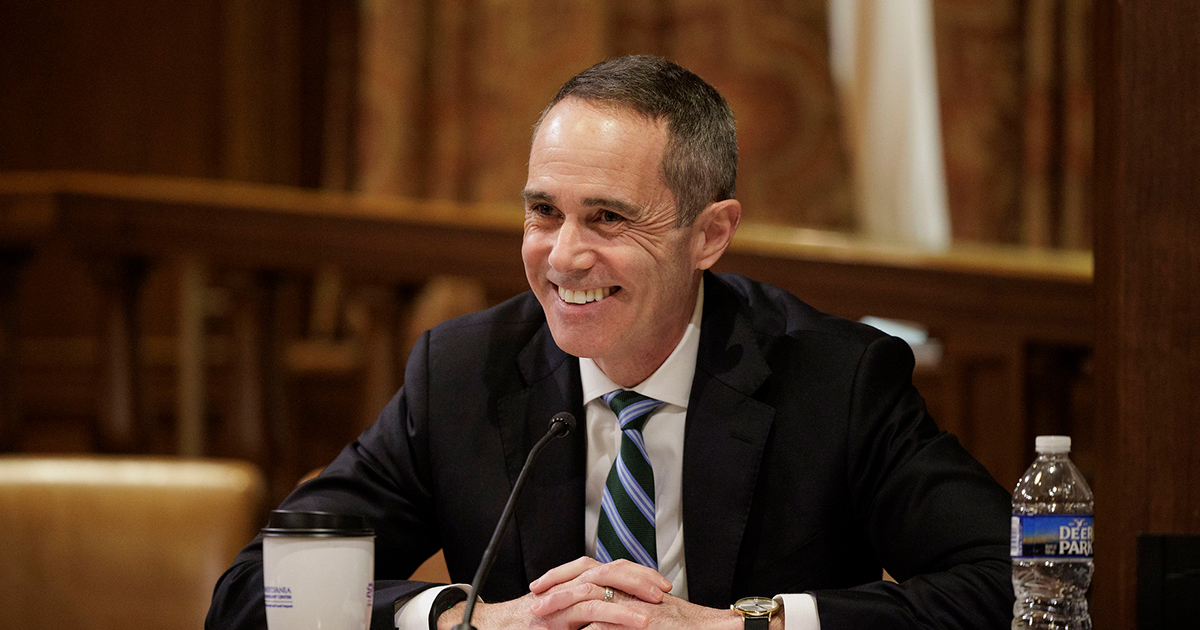Senator Santarsiero Announces Legislation to Jumpstart New Era of Reliable, Sustainable Energy in Pennsylvania
Senator Santarsiero Announces Legislation to Jumpstart New Era of Reliable, Sustainable Energy in Pennsylvania Pennsylvania Senate Democrats


Bucks County – March 20, 2024
State Senator Steve Santarsiero Introduces Legislation to Promote Sustainable Energy Development in Pennsylvania

State Senator Steve Santarsiero (D-10) has announced new legislation aimed at jumpstarting a new era of reliable and sustainable energy development in Pennsylvania. This initiative aligns with the Sustainable Development Goals (SDGs) set by the United Nations to address global challenges, including climate change and affordable clean energy.
The legislation, known as the Pennsylvania Reliable Energy Sustainability Standard (PRESS), builds upon Governor Shapiro’s ambitious energy announcement from last week. Senator Santarsiero’s proposed legislation will establish new standards for energy generation in the state.
“I have always believed that we don’t have to choose between creating jobs and saving our planet,” said Senator Santarsiero. “I am proud to see Governor Shapiro leading the way and bringing together the interests of consumers, labor, and the environment to find a solution that benefits us all. With that in mind, I am introducing the Pennsylvania Reliable Energy Sustainability Standard, which represents the next generation of alternative energy portfolio standards for the Commonwealth.”
The PRESS legislation retains the successful elements of the existing Alternative Energy Portfolio Standards (AEPS) while incorporating new elements to make it more inclusive. For the first time, nuclear power, next-generation technologies like fusion, and clean forms of natural gas will be included. This revitalized energy standard aims to deliver significant economic value, enhance the reliability of the electricity grid, and position Pennsylvania as a leader in the energy sector for the next twenty years.
The key provisions of the PRESS legislation include:
- Tier I: This tier includes solar photovoltaic and solar thermal energy, wind power, low-impact hydropower, geothermal energy, small modular reactors (SMR), fusion technology, coal mine fugitive emissions, and biologically derived fugitive emissions.
- Tier II: Limited to in-state Pennsylvania resources, this tier covers non-solar distributed generation systems, demand-side management, large-scale hydropower, natural gas or coal using clean hydrogen co-fired blend or equivalent carbon intensity reduction technologies, fuel cells, biomass energy, 24-hour storage co-located with a Tier I resource, and Tier I reliable energy sources.
- Tier III: Also limited to in-state Pennsylvania resources, this tier includes natural gas or coal using clean hydrogen co-fired blend or equivalent carbon intensity reduction technologies, waste coal, municipal solid waste, integrated combined coal gasification technology, generation of electricity utilizing by-products of the pulping process and wood manufacturing process, and Tier I reliable energy portfolio sources located within PA.
The PRESS legislation sets ambitious targets for clean and renewable energy projects in each tier, with a goal of achieving 35% clean energy generation in Tier I by 2035, 10% in Tier II, and 5% in Tier III. Additionally, the legislation ensures the continuity of existing clean energy nuclear facilities by providing support in the event of closure threats.
If passed by the General Assembly, the PRESS legislation is expected to unlock a wave of new investment in advanced energy technologies across Pennsylvania. It will make the state more competitive by incentivizing new development within its borders. The positive impact is projected to add over $5.1 billion in direct investment by 2035.
Alongside companion legislation in the Governor’s energy plan, the PRESS initiative aims to protect and create nearly 15,000 energy jobs, lower utility bills for Pennsylvania households, and take concrete action to address carbon pollution. In the first five years alone, these initiatives are estimated to save Pennsylvania ratepayers $252 million while generating $5.1 billion in investment in clean and reliable energy sources.
“I look forward to collaborating with Governor Shapiro and my colleagues in the Senate to pass legislation that not only saves consumers money on their energy bills but also creates family-sustaining jobs and tackles climate change,” added Senator Santarsiero.
###
SDGs, Targets, and Indicators
1. Which SDGs are addressed or connected to the issues highlighted in the article?
- SDG 7: Affordable and Clean Energy
- SDG 8: Decent Work and Economic Growth
- SDG 9: Industry, Innovation, and Infrastructure
- SDG 13: Climate Action
2. What specific targets under those SDGs can be identified based on the article’s content?
- SDG 7.2: Increase substantially the share of renewable energy in the global energy mix.
- SDG 8.1: Sustain per capita economic growth in accordance with national circumstances and, in particular, at least 7% gross domestic product growth per annum in the least developed countries.
- SDG 9.4: Upgrade infrastructure and retrofit industries to make them sustainable, with increased resource-use efficiency and greater adoption of clean and environmentally sound technologies and industrial processes.
- SDG 13.2: Integrate climate change measures into national policies, strategies, and planning.
3. Are there any indicators mentioned or implied in the article that can be used to measure progress towards the identified targets?
- Percentage of clean and renewable energy projects in Tier I by 2035 (Indicator for SDG 7.2)
- Percentage of energy generated from natural gas or coal using clean hydrogen co-fired blend or equivalent carbon intensity reduction technologies (Indicator for SDG 9.4)
- Amount of direct investment in clean, reliable energy sources by 2035 (Indicator for SDG 8.1)
- Reduction in carbon pollution (Indicator for SDG 13.2)
SDGs, Targets, and Indicators
| SDGs | Targets | Indicators |
|---|---|---|
| SDG 7: Affordable and Clean Energy | Increase substantially the share of renewable energy in the global energy mix. | Percentage of clean and renewable energy projects in Tier I by 2035 |
| SDG 8: Decent Work and Economic Growth | Sustain per capita economic growth in accordance with national circumstances and, in particular, at least 7% gross domestic product growth per annum in the least developed countries. | Amount of direct investment in clean, reliable energy sources by 2035 |
| SDG 9: Industry, Innovation, and Infrastructure | Upgrade infrastructure and retrofit industries to make them sustainable, with increased resource-use efficiency and greater adoption of clean and environmentally sound technologies and industrial processes. | Percentage of energy generated from natural gas or coal using clean hydrogen co-fired blend or equivalent carbon intensity reduction technologies |
| SDG 13: Climate Action | Integrate climate change measures into national policies, strategies, and planning. | Reduction in carbon pollution |
Behold! This splendid article springs forth from the wellspring of knowledge, shaped by a wondrous proprietary AI technology that delved into a vast ocean of data, illuminating the path towards the Sustainable Development Goals. Remember that all rights are reserved by SDG Investors LLC, empowering us to champion progress together.
Source: pasenate.com

Join us, as fellow seekers of change, on a transformative journey at https://sdgtalks.ai/welcome, where you can become a member and actively contribute to shaping a brighter future.







